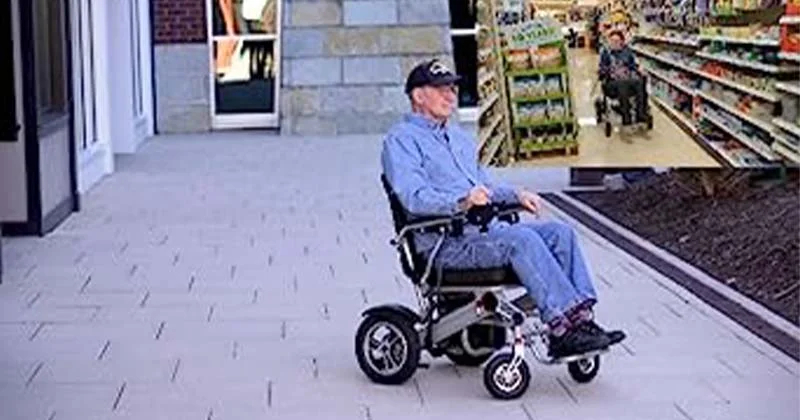Through the years, mobility devices have experienced significant improvements, evolving from simple, manual designs to more sophisticated technology solutions. Mobility aids like wheelchairs and rollator walker for sale in Canada have proven to be crucial tools for people suffering from disabilities in mobility due to injury, aging, or disabilities.
In the article below, we’ll examine the latest advancements in wheelchair and rollator technology and how these advancements will shape how mobility will evolve in the coming years.
The Current State of Mobility Aids
Before we look to the next frontier of technology for mobility, it is essential to know the current mobility devices and the issues that users have to face. The wheelchair and rollator have advanced from their first designs, but there’s still the need for improvements. The present technology of mobility aids comes with many different equipment, each designed to meet particular needs and preferences.
Rollators: More Than Just a Walker
Rollers, commonly referred to as walking walkers that roll, are a favorite option for those who need some help in balance and mobility. However, they are able to walk on their own. These are devices that comprise a frame that has four wheels, handles, and a seating area to rest on. The major benefit of rolling over traditional walkers is that they provide greater stability and support while also allowing users to maintain a healthy walking style.
In recent times, rolling machines have undergone many advancements. A majority of models are now fitted with hand brakes, which allow users to regulate their speeds and get to a full stop faster. There are also models with adjustable heights, which makes them ideal for people of different sizes. In addition, storage options, such as pouches or baskets, offer a convenient method to store personal belongings.
Wheelchairs: Traditional and Power
Wheelchair for sale In Canada are, however, made for those who have more severe disabilities in mobility. The traditional wheelchairs, which are powered by hand, are used for a long time. They comprise seats, wheels, and handles to allow self-propulsion or the assistance of an adult caregiver. They have advanced by way of material, design, and mobility, yet they rely on the physical strength of the user to move.
Power wheelchairs, also referred to as electric wheelchairs, are an important improvement in the technology of mobility. They are operated by a joystick or other input methods, which makes them ideal for people who are weak in physical strength and mobility. They have changed the lives of a lot of users with greater mobility and autonomy.
Despite these advances, some challenges persist. Traditional wheelchairs are physically demanding as well as power wheelchairs may not always provide the required degree of mobility, particularly in restricted areas.
The Future of Mobility: What Lies Ahead
As technology advances quickly, mobility’s future has a lot of potential. Advancements in the field of wheelchairs and rollators are not just about enhancing the function and convenience of these devices but also improving the overall level of living for those using them. Here are a few key developments and trends that are expected in the near future for mobility aids.
1. Smart and Connected Devices
A major and thrilling development in the area of aids to mobility is the blending of smart and connected technology. As mobile phones, wearables, and other devices have been a regular aspect of our lives, mobility aids are also expected to benefit from digital connectivity and features. Smart wheelchairs and smart rollators are being developed to give users more control, comfort, safety, and convenience.
- Remote Control and Customization: Users are able to control their devices remotely using apps for their smartphones, which allows users to alter settings, check the battery’s life, and even use their mobility aids to visit them.
- Navigating and GPS: Smart devices can provide turn-by-turn navigation that allows users to reach their destination quickly. This is especially helpful, especially for those who use wheelchairs and encounter obstacles on their way.
- Safety Features: In Canada, some devices can contain sensors that detect obstacles and notify users and collision avoidance technology to reduce accidents.
- Health Monitoring: Some smart mobility devices are fitted with sensors to monitor important signs like blood pressure and heart rate that can be communicated to healthcare professionals in real time.
2. Inclusivity and Accessibility
Future mobility devices will be based on accessibility and inclusion to all users, regardless of ability. This means addressing not just physical mobility but also sensory and cognitive impairments.
- Voice Command Interfaces: The devices will come with voice command interfaces that are designed to assist users with limited manual dexterity.
- Sensory Feedback: Mobility aids provide sensory feedback to aid those with auditory or visual difficulties in navigating their environment without danger.
- Cognitive Assistance: Some devices incorporate cognitive assistance functions to aid users struggling with memory or other issues with decision-making.
- Universal Design: Manufacturers will use universal design principles in order to make sure that the products they sell are available to the largest number of customers.
3. Artificial Intelligence and Machine Learning
Artificial Intelligence (AI), along with machine learning, is able to revolutionize mobility aids. They are able to adapt and adapt to the specific requirements and preferences of every user.
- Adaptive Controls: AI-powered mobility aids learn and adapt to user’s actions, making them more user-friendly to operate.
- Predictive Maintenance: The devices are able to identify and respond to maintenance needs to ensure that they are in good condition.
- Learning Environments: Mobility aids that are equipped with AI are able to adapt and learn from particular environments, assisting users to navigate around spaces more effectively.
- Voice activation: AI can enable voice-activated commands, which makes it easier for users to manage their devices.
4. Sustainability and Eco-Friendly Designs
As the world becomes more aware of the ecological impacts of its products, Mobility aid makers are looking at sustainable and environmentally friendly designs.
- Recyclable Materials: Utilizing biodegradable and recyclable materials can reduce the environmental impact of mobility aids.
- Energy efficiency: The latest energy storage and management of power will increase the life and range that electric motor aids provide.
- Reduced Emissions: For power wheelchairs, there’s increasing emphasis on reducing the amount of emissions and energy consumption with energy-efficient electric motors.
Conclusion
Future mobility through wheelchairs and rollators is a testimony to the continuous march of technological advancement. These devices have grown from simple tools to complex, intelligent, connected and smart aids that offer greater independence, comfort and accessibility for users.
Related Article: How Technology is Paving the Way for Universal Accessibility in Transportation?



